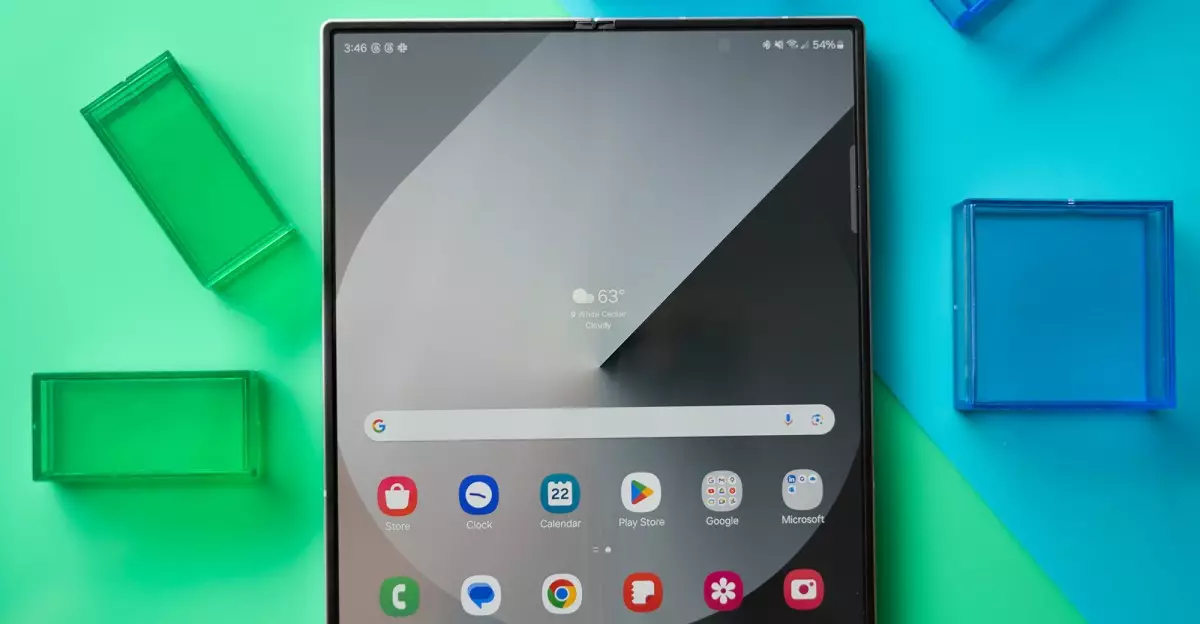Samsung has long positioned itself as a pioneer in the foldable smartphone industry, continuously pushing the boundaries of what mobile devices can do. Despite their persistent efforts over the past decade, foldable phones remain a niche market, struggling to shake off perceptions of fragility and high costs. This year, however, Samsung appears to be making a decisive stride toward addressing these issues with a slate of new devices that promise to redefine expectations. Yet, one fundamental question lingers: will these innovations be enough to persuade even the most hesitant consumers?
At the heart of Samsung’s strategy is the bold move to introduce an Ultra-branded foldable device, which signals a potential shift away from the incremental upgrades that have characterized their lineup. Rumors suggest a thinner, more durable foldable with refined aesthetics—a response to consumer demands for both durability and sleekness. Accompanying this is the anticipated Z Flip 7, which aims to feature a larger front display that nearly obliterates the need to flip open the device for most interactions. These incremental improvements are promising, but do they tackle the core barriers—cost, durability, and public perception—that have kept the foldable segment from exploding into mainstream popularity?
In essence, Samsung appears motivated to innovate faster and smarter than ever before, realizing that mere iteration isn’t enough. They face tough competition not only from Apple’s imminent foray into foldables but also from other manufacturers such as Oppo and Honor, who are attacking different price points and design philosophies. The question is whether these new devices will provide enough value to shift consumer behavior, especially when potential buyers are still wary of sacrificing durability for the allure of novelty.
Market Realities and Consumer Reluctance
Despite the breathless marketing and technological advancements, foldable phones still constitute a tiny fragment of the global market—roughly 1.5 percent as of 2024. The picture is even more stark in markets like the US, where early adopters have expressed skepticism due to the high price tags and concerns over device longevity. Samsung, the de facto leader of this niche, has yet to produce a foldable that can truly challenge traditional smartphones on a broad scale.
A significant deterrent remains the perceived fragility of foldables. While Samsung claims to have made strides in reducing creasing and improving the folding mechanism, these devices are still more prone to dust ingress and mechanical failures compared to standard flagships. Essentially, a foldable still asks the consumer to accept a degree of vulnerability—an unpalatable tradeoff for many, especially as smartphone prices climb into premium territory. Without meaningful enhancements in durability and water resistance, foldables risk remaining devices for early adopters rather than mass consumers.
Furthermore, the high repair costs—particularly for flexible display replacements—add another layer of hesitation. Consumers are increasingly sensitive to lifecycle costs, and unless foldables demonstrate comparable or superior resilience and ease of repair, skepticism will persist. Samsung’s claims of pursuing IP68 ratings for foldables suggest progress, but until durability standards meet or surpass those of traditional flagship phones, adoption will remain sluggish.
The Gathering Storm: How Apple and Market Evolution Could Shift the Balance
Amid these challenges, the industry is looking toward a potential game-changer: Apple’s coveted entry into foldables, rumored for 2026. The potential for an iFold—if it materializes—could give an enormous boost to the market, especially in the United States, where Apple’s influence fundamentally shapes consumer choices. An Apple foldable, backed by its vast ecosystem and brand loyalty, might normalize the form factor and make it more appealing than ever before.
This looming possibility acts as a catalyst for Samsung’s evolving strategy. If Apple’s entry helps expand the foldable market significantly, Samsung may find itself with a larger audience primed for the next wave of devices. Such a scenario could incentivize Samsung to deepen its hardware innovations—offering ultra-premium foldables with cutting-edge features and improved durability—in hopes of capturing early adopters and mainstream buyers alike.
On the other hand, Samsung’s focus on diversifying its foldable lineup across different price segments, including potential budget-friendly models, hints at their awareness of market segmentation. The hope is that offering a range of devices—from ultra-high-end to more affordable options—will foster wider acceptance and boost market share. The success of this approach hinges on whether the perceived value matches the premium price tags or if consumers will continue to see foldables as aspirational gadgets rather than essential tools.
Will Innovation Be Enough to Spark Widespread Adoption?
Ultimately, the crux of the matter lies in consumer perception. Samsung can refine its foldables to the point of unmatched durability and aesthetic appeal, but if the market perceives these devices as fragile or overpriced, mass adoption will be elusive. Technological leaps alone won’t suffice; the industry needs cultural shifts that embrace foldables as reliable, everyday devices—not just novelties or luxury items.
In addition, profitability remains a concern. Samsung’s foray into foldables has so far been a mix of visionary aspirations and cautious incrementalism. The shift to Ultra models and more competitive price points signals a desire to break through the barriers of skepticism, but whether these efforts translate into substantial gains remains to be seen. The true measure of success will be not just in sales figures but in transforming foldables into a permanent fixture of the mainstream smartphone landscape.
The industry’s future will depend heavily on how quickly and convincingly Galaxy’s foldable innovations can address existing pain points. Only then can foldables shed their reputation as fragile and niche devices and become compelling alternatives—wielding flexibility and power in the palm of our hands.

